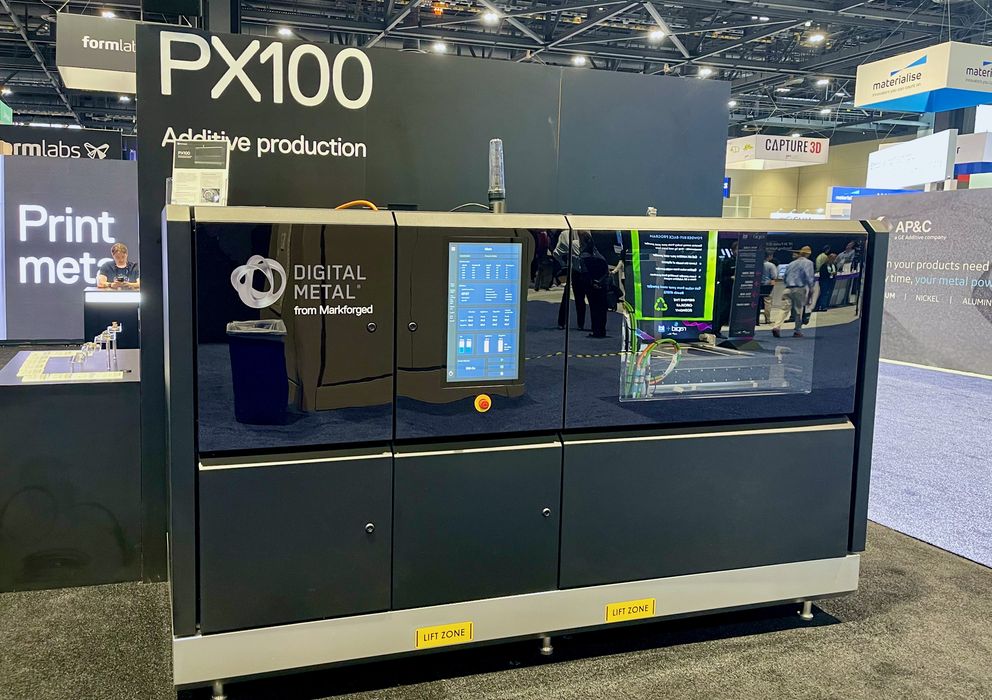
We had an interesting discussion with Markforged about their recent acquisition, Digital Metal.
Digital Metal was originally formed by Höganäs, a company that produces industrial metal powder. Their concept was to build up demand for their metal products by introducing a 3D printer that made use of their powders.
While the venture was mostly successful, the subsidiary was picked up last year by Markforged in a surprise acquisition. An earlier discussion with former Digital Metal staff revealed they’re still quite excited about the opportunities opened up by the larger Markforged ecosystem.
The acquisition complemented Markforged’s existing line of metal 3D printers with Digital Metal’s ability to print smaller, but extremely detailed metal objects in a variety of materials. I’ve always blown away by Digital Metal’s prints, as they are not only detailed, but rarely require any finishing due to the extraordinary surface quality.
Markforged told us they have “brought stability and a basic marketing presence” for the Digital Metal products, which makes sense: Markforged is larger and has a highly experienced sales and marketing team, with a significant distribution network.
The discussion with Markforged revolved around the new PX100 device and the business targets for this machine. This device was actually originally announced by Digital Metal before the acquisition as the DM PRO 70kp84, but under the Markforged regime it’s become the PX100, a lot easier to type and speak.
The PX100 uses memjet inkjet printheads, and a great deal of them. The configuration includes a whopping 70,400 nozzles, which means prints can be produced at much higher speeds. The prior Digital Metal machine used only 1200 nozzles, meaning the PX100 can print an entire layer in one sweep.
One might think that such a machine might have a large potential customer market, but it turns out that’s not the case, at least from Markforged’s point of view. We were told there really are “not that many customers” due to the unique features of the technology.
It seems that the manufacturers that would use this technology tend to be producers of finely detailed equipment. Markforged has learned that a good portion of them prefer to use contract manufacturers, rather than using machines in their own factories.
So how does this work? Markforged provided an example scenario. Suppose Apple (not a real client, but just a hypothetical example) wished to use the technology to produce a particular component.
In that scenario, Apple would buy a single machine and use it in-house to experiment with its ability to produce the part. If they were satisfied, they’d then turn over the actual volume production to a contract manufacturer, like Jabil, for example, that would presumably have the same machines ready for use.
This limits the potential market for this type of machine, but also provides focus on a specific type of customer: contract manufacturers.
The moral of the story here is that business success is not only due to the technology; the technology has to also fit within the usage envelope. Once all the pieces are identified, then success can follow.
Via Markforged
